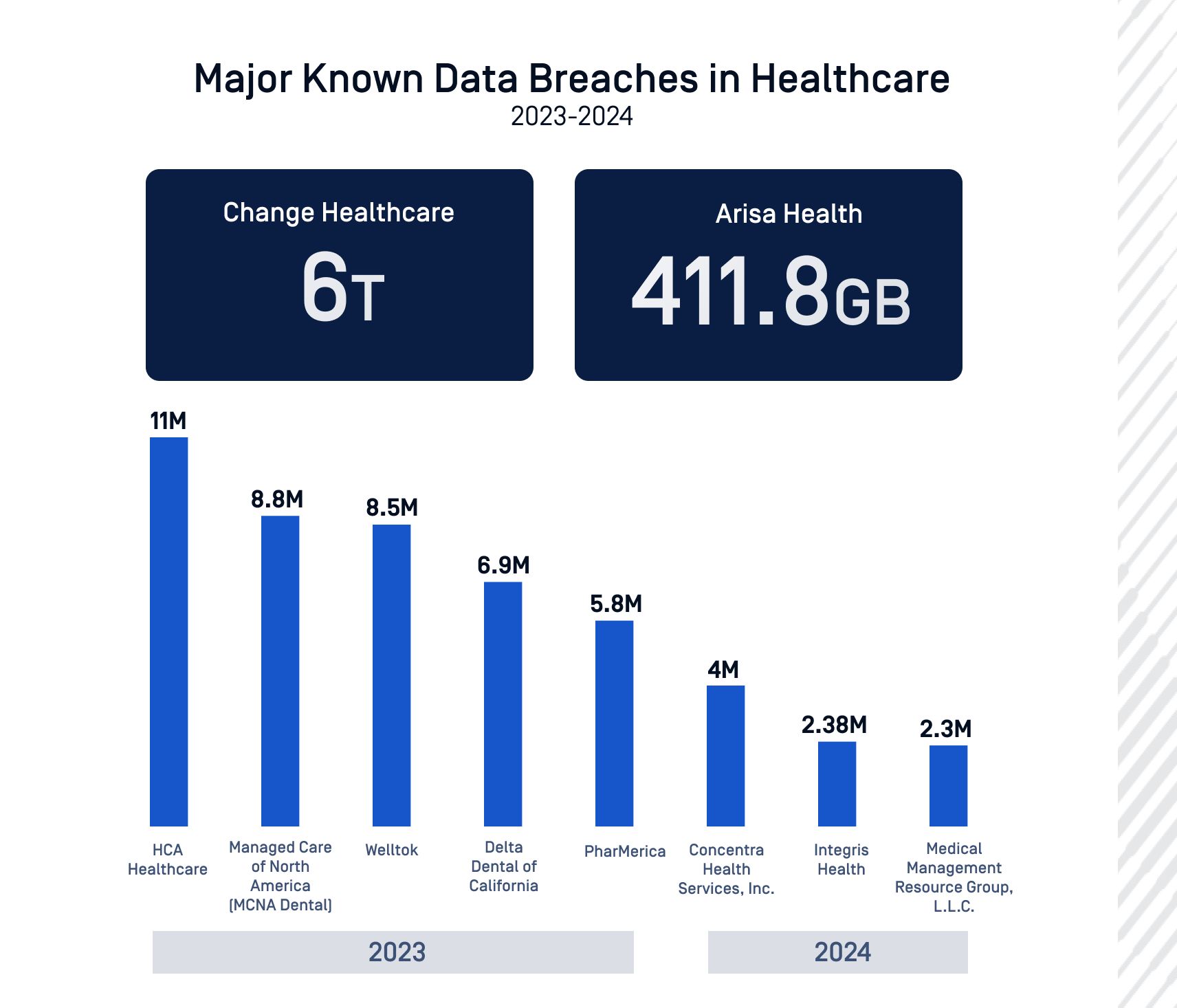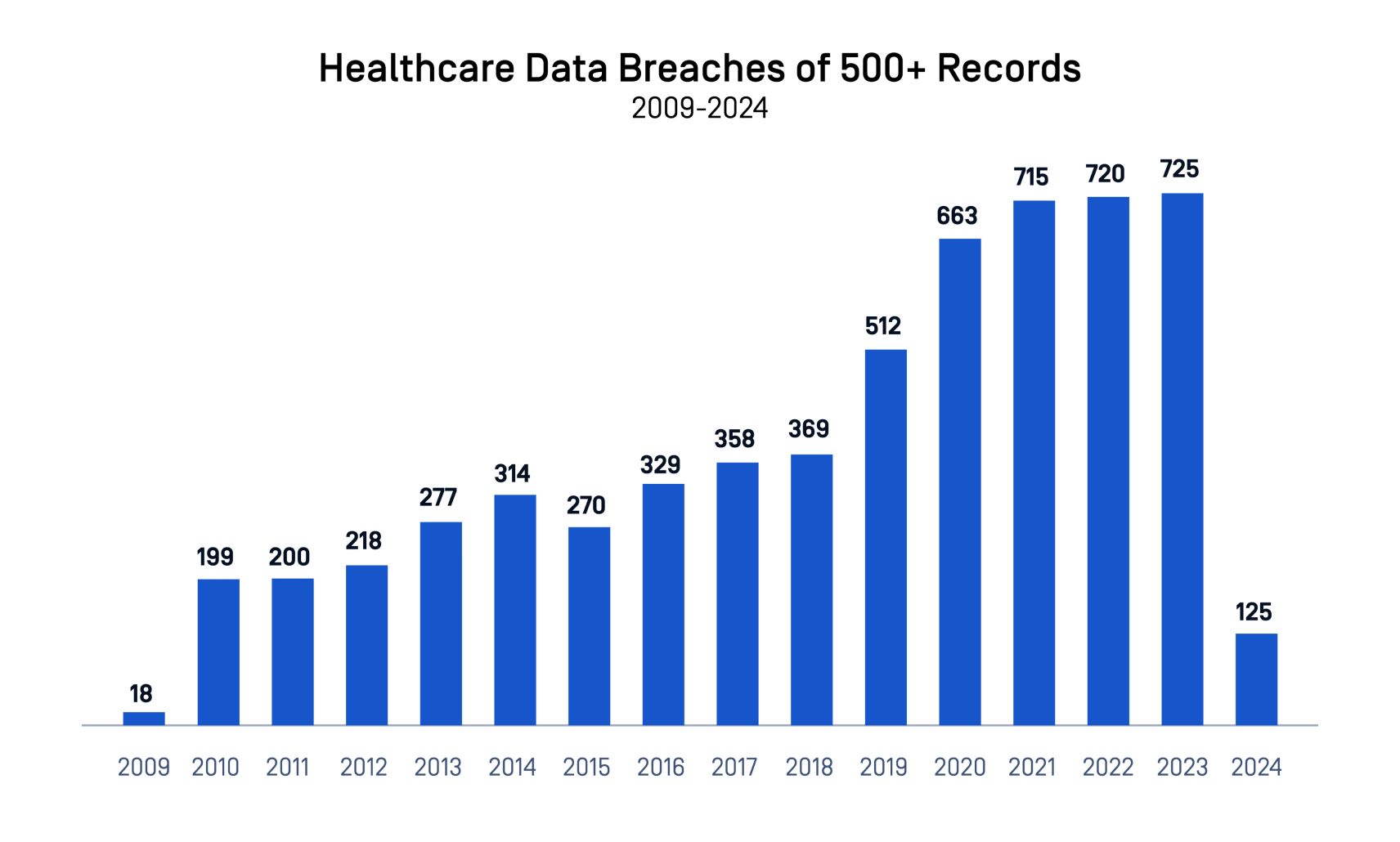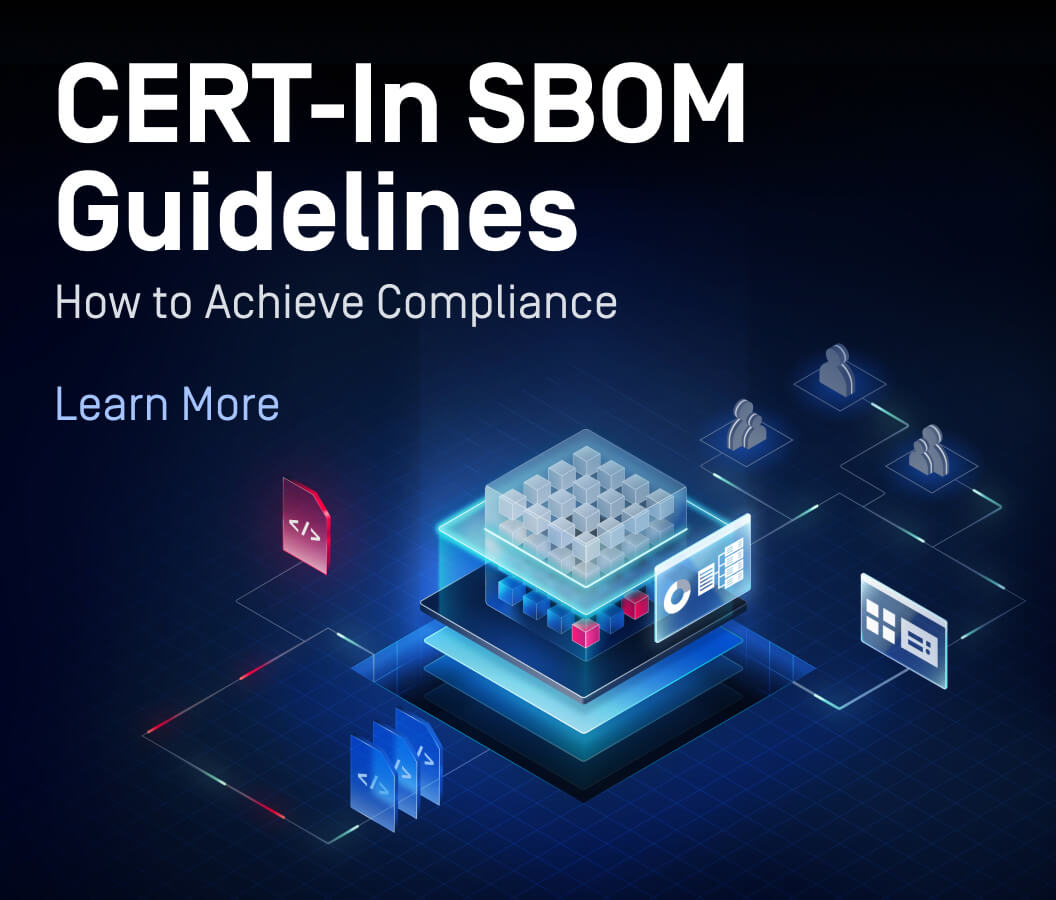The New Era of Digital Healthcare
Over the past year, there has been significant progress in the digital healthcare and technology sector, with companies continuously developing solutions to support both patients and physicians. The ongoing digitization and automation of healthcare systems holds immense potential for improving health outcomes. However, as we have seen with the recent high-profile cyberattack against Change Health, the proliferation of digital services in healthcare also presents an unprecedented challenge in safeguarding medical data.
Healthcare IT leaders must implement robust security controls and gain visibility into user behavior to effectively monitor data integrity. This necessitates adopting a person-centric approach and monitoring data movement to ascertain intent and ensure data protection. While connecting users to sensitive medical data via secure channels is crucial, it's only one aspect of the larger security framework. Additionally, as healthcare process automation enhances efficiency in decision-making, it also introduces risks of data loss. Such loss can manifest in various forms, including information theft, data leaks, manipulation, and unauthorized sharing with third parties. Therefore, implementing data loss prevention (DLP) measures in healthcare is essential.
High-Profile Cyberattacks on Healthcare
In 2023, the Department of Health and Human Services (HHS) Office for Civil Rights (OCR) reported 541 instances of data breaches impacting over 500 individuals. Some of these incidents affected millions, or even tens of millions of individuals, such as the widely publicized breach at HCA Healthcare during the summer.
On Thanksgiving of the same year, Ardent Health Services experienced a ransomware attack, prompting the 30-hospital system to proactively shut down and suspend all user access to its IT applications. This resulted in delays in non-emergency procedures.
As of February 2024, HIPAA Journal recorded 24 data breaches involving 10,000 healthcare records.
The most significant cyberattacks targeting healthcare providers this year focused on Change Healthcare, a subsidiary of UnitedHealth Group. Following the ALPHV attack, the company faced a second ransomware crisis. Threat actors claimed to possess 4 TB of the company's data, including personally identifiable information (PII) of active US military personnel, patient medical records, payment details, and more.
According to a report from the American Health Association, nearly 60% of surveyed hospitals reported daily revenue losses of at least $1 million, with 74% stating that the Change Healthcare incident directly impacted patient care within their facilities.

Rising federal and state regulation
New industry requirements surrounding healthcare data security are on the horizon as legislators move to hold organizations accountable for data protection.
HIPAA
HIPAA Privacy Rule, 45 CFR Part 160 and Subparts A and E of Part 164, delineates permitted and required uses and disclosures of protected health information (PHI). PHI can exist in any form, including on paper, film, and in electronic form, and is considered individually identifiable health information.
HIPAA Security Rule, 45 CFR Part 160 and Part 164, Subparts A and C, outlines requirements for electronic PHI (ePHI). Covered entities and their business associates are mandated to maintain the confidentiality, integrity, and availability of ePHI.
HIPAA Breach Notification Rule, 45 CFR §§ 164.400-414, requires HIPAA-covered entities and their business associates to provide notification following a breach of unsecured protected health information.
NIST
NIST Special Publication 800 NIST SP 800-66r2, published in Feb 2024, provides guidance for regulated entities (i.e., HIPAA-covered entities and business associates) on assessing and managing risks to ePHI, identifies typical activities that a regulated entity might consider implementing as part of an information security program, and presents guidance that regulated entities can utilize in whole or in part to help improve their cybersecurity posture and assist with achieving compliance with the HIPAA Security Rule.
HHS
In December 2023, the Department of Health and Human Services (HHS) released a concept paper outlining its cybersecurity strategy for the healthcare sector. This strategy emphasizes heightened enforcement efforts and the establishment of elevated industry practice standards. Subsequently, in January 2024, HHS unveiled its Health Care and Public Health Sector-Specific Cybersecurity Performance Goals (CPGs). These goals are divided into "essential" and "enhanced" categories, aiming to address prevalent cybersecurity vulnerabilities within the healthcare industry.
The HHS 405(d) program offers practical guidance for healthcare organizations tackling the complexities of implementing robust data security measures. This initiative underscores the strategic integration of Data Loss Prevention (DLP) systems as a pivotal component of a comprehensive data security framework. Tailoring DLP solutions to align with the distinct needs of healthcare workflows holds the potential to significantly reduce false positives and enhance the overall effectiveness of data protection initiatives.
The U.S Federal Laws
Federal laws like the Gramm-Leach-Bliley Act (GLBA), the Family Educational Rights and Privacy Act (FERPA), and the Fair Credit Reporting Act (FCRA) safeguard the confidentiality of personal data. In addition to these federal regulations, new state laws continue to emerge, further reinforcing data privacy and protection measures:
Leveraging Proactive Data Loss Prevention in Healthcare Data Security
With patient data and safety of paramount importance, how can healthcare providers be sure their existing security tools are effective against evolving threats?
There has been a noticeable uptick in attacks targeting smaller, regional healthcare providers, underscoring the need for strong cybersecurity measures. These organizations typically store extremely sensitive data, rendering them prime targets for hackers. Implementing "multi-layered" security approaches, incorporating data loss prevention and proactive threat detection, is crucial for minimizing potential harm.
OPSWAT Proactive DLP
DLP involves strategies aimed at averting inadvertent or unauthorized disclosure of sensitive data, like patient records or PHI. This is particularly crucial in healthcare, where the compromise of PHI can profoundly impact patients, potentially leading to identity theft or compromised medical treatment. Establishing a robust DLP strategy is imperative for organizations to mitigate data breaches and uphold the security and confidentiality of healthcare data.
How OPSWAT Proactive DLP works
OPSWAT Proactive DLP detects and blocks sensitive, out-of-policy and confidential data in files and emails. Equipped to mitigate potential data breaches, Proactive DLP employs a comprehensive array of security measures, including detecting file-borne malware, employing AI-powered document classification, and leveraging Optical Character Recognition (OCR) for sensitive information redaction. It supports HIPAA compliance through robust data loss prevention, access controls, and risk mitigation capabilities.

Samples of Redacted DICOM files

Before: Original nuclear medicine scan displaying patient's identifiable information, including name, ID, and birth date
OPSWAT MetaDefender Platform
OPSWAT MetaDefender Platform offers comprehensive threat prevention tailored for healthcare organizations to handle health data securely and cost-effectively. MetaDefender Platform simplifies security operation processes, scales easily, and provides market-leading technologies for a defense-in-depth strategy, such as:
- Deep CDR disarms potentially malicious files and regenerates safe-to-use content.
- Multiscanning detects both known and unknown malware with 30+ AV engines.
- Adaptive Sandbox detects malware with dynamic and static analysis.
- Country of Origin restricts access to data based on location and vendor.

Discover how OPSWAT MetaDefender Platform can assist healthcare entities with their data security challenges in this whitepaper.
Charting the Future of Digital Healthcare Security
The healthcare sector faces a looming threat from increasingly sophisticated cyberattacks, including AI-powered attacks, presenting a formidable challenge that surpasses conventional security measures. Tailored phishing schemes, automated exploitation of system vulnerabilities, and other growing risk factors brought about by increased digitization and automation pose a grave risk to patient data integrity and operational continuity.
To effectively combat these evolving threats, healthcare IT teams must implement robust data protection protocols to protect sensitive PHI from threat actors. This proactive approach ensures healthcare organizations are well equipped to meet compliance standards and continue providing critical care to their patients.
Secure your organization’s sensitive data today.






